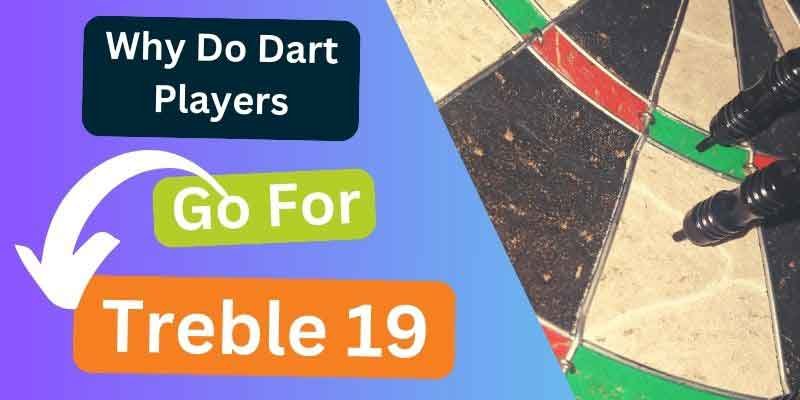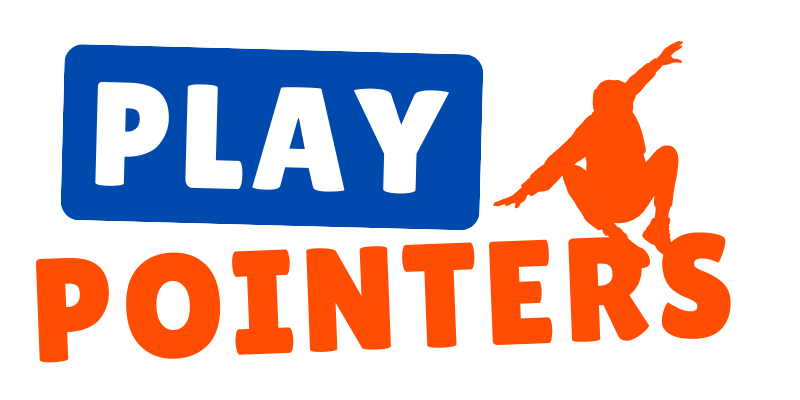Why Do Dart Players Go For Treble 19?

Key Takeaways:
- Treble 19 is a popular cover shot when the triple 20 is blocked
- The highest scoring triple with an odd number
- Hitting a triple 19 can be easier than triple 20
Why Do Dart Players Go For Treble 19?
When you throw darts, the most popular number to go for is triple 20. It’s not hard to understand why because it is the highest scoring bed with a single dart on the board.
So why do dart players for treble 19?
There are a number of reasons why players will opt for 19 instead, which include:
- The 19s is a popular cover shot when the 20s is blocked
- Beginners often find it easier to hit numbers down the bottom of the dartboard
- Is often needed for high checkouts of odd numbers
- It is part of the most common route to a nine dart finish
Why Is The Treble 19 A Popular Cover shot in Darts?
Blocked Beds
The aim of the game in darts, especially in games like 501, is for players to get to zero using as few darts as they can. To do that, you need to get the highest score possible with three darts.
The number 1 choice for most dart players is to go for the treble 20 bed.
However, it’s not uncommon for darts to land in funny angles, even sideways, causing a blocked bed. It explains why you see so many players switching down to the 19s with their second or third dart.
- If you can’t see what you’re going for, it’s hard to aim your throw, regardless of how good you are.
- It’s much better to go for the next highest target, which is the triple 19, worth 57 points.
- Some players find it easier to go for triple 18, which is only two number segments to the right.
Loose Darts
A blocked bed is only one reason why players have to make a cover shot. You will commonly see players visit the 19’s when there is a loose dart, all but ready to fall out of the 20s.
To continue throwing towards the loose dart is foolish, and the slightest contact could knock it out of the dartboard, if it’s that loose.
If it falls out of the board before getting collected, that is no score for the fallen dart. It is funny to see players practically running to get their darts before they fall out.
Beginner Struggles Hitting The Triple 20
Relatively speaking, many novice players struggle with the triple 20, and in general, the numbers high up on the board. Instead of continuing on struggling, beginner players go for triple 19 usually for a couple of reasons:
- It’s typically easier to hit the numbers lower down the board.
- If they miss the 19, the numbers beside it are 7 and 3, higher than 5 and 1 beside the 20 bed.
It’s not a bad idea to switch to triple 19 if you are finding the triple 20 difficult to hit.
Darts is a mental game where confidence is a big advantage, and if anything that helps, go for it.
- At local league and pub level, the difference between 57 points and 60 points is not too significant
- If you were playing near to professional level, that would be different
- Usually after playing for a while, consistently practicing and building confidence, players usually head back up the board to the 20.
To Get a Nine-Dart Finish
The holy grail for most of us playing darts is the nine darter, which is the perfect game of darts. Not many of us will ever hit it or even get close, but it won’t stop us from trying.
There are different routes you can take to get a nine darter.
The traditional route, the one most frequently used, to get a nine dart finish, leaves 141 after two 180s.
Commonly, dart players go for:
- Triple 20
- Triple 19
- Double 12
- Check out the 141 remaining
The same can be said for any high out left that is an odd number.
It’s common that you will need at least 1 triple 19 in your first or second dart to get to a good double, which is most commonly an even number, double 20 or double 16.






